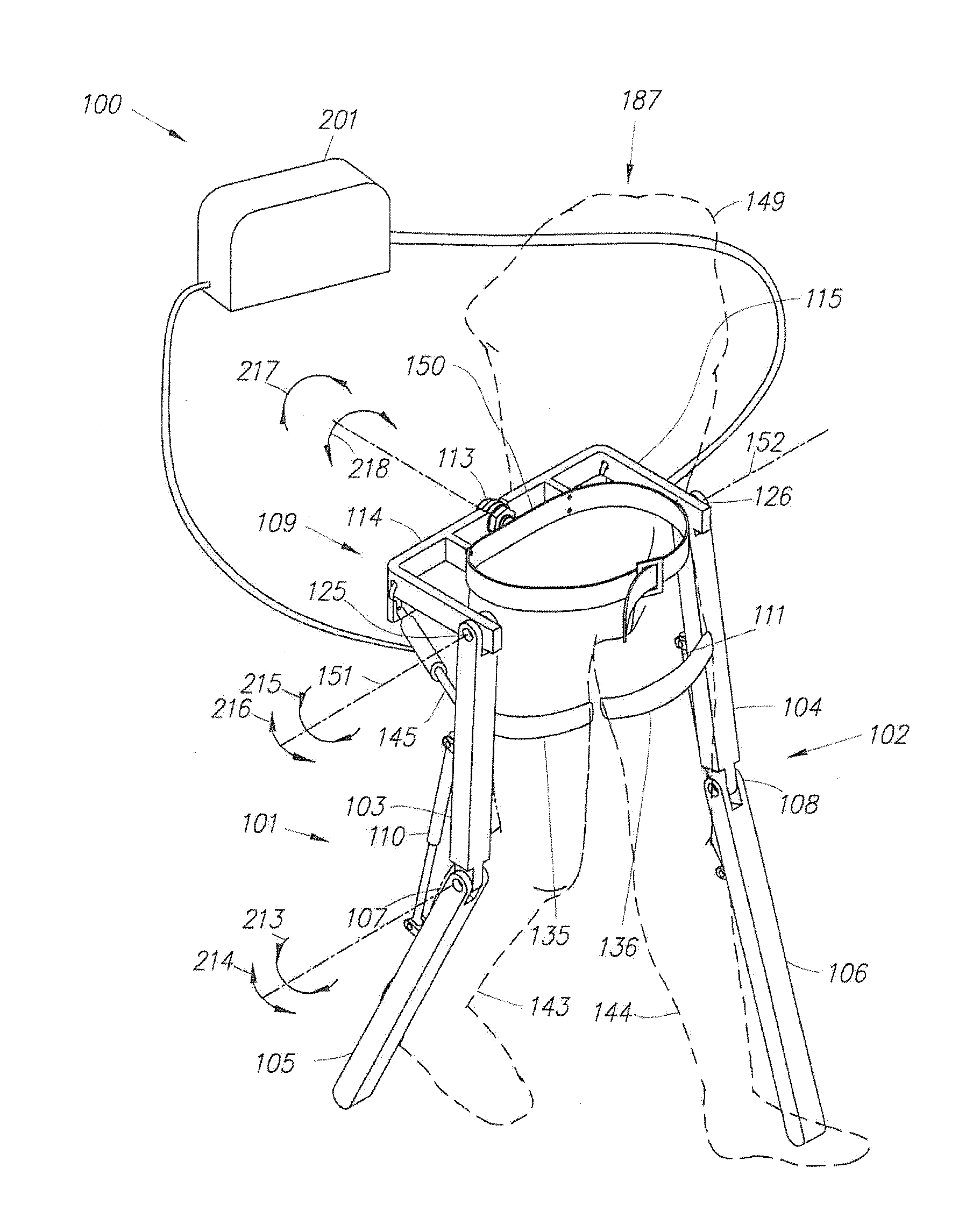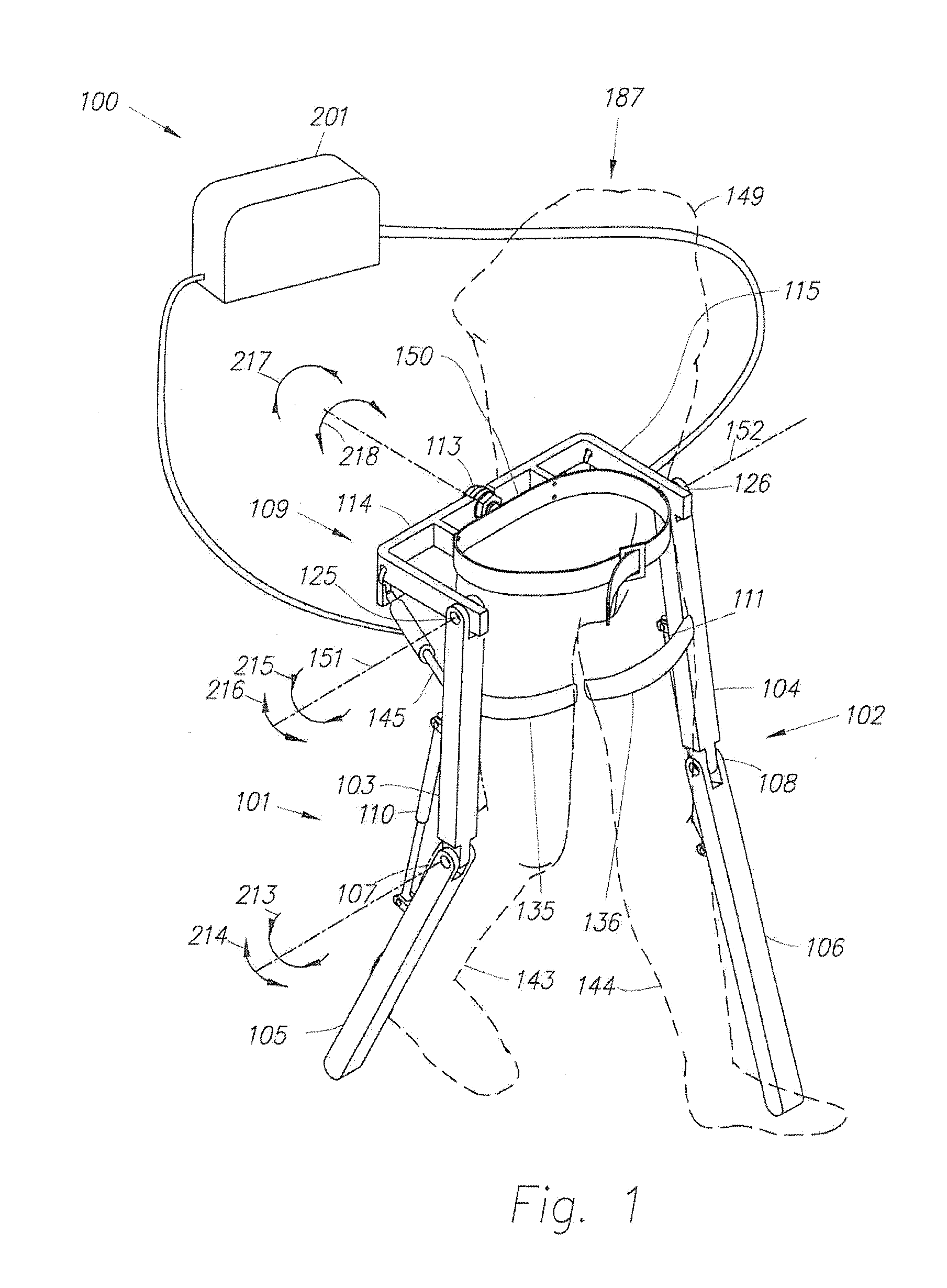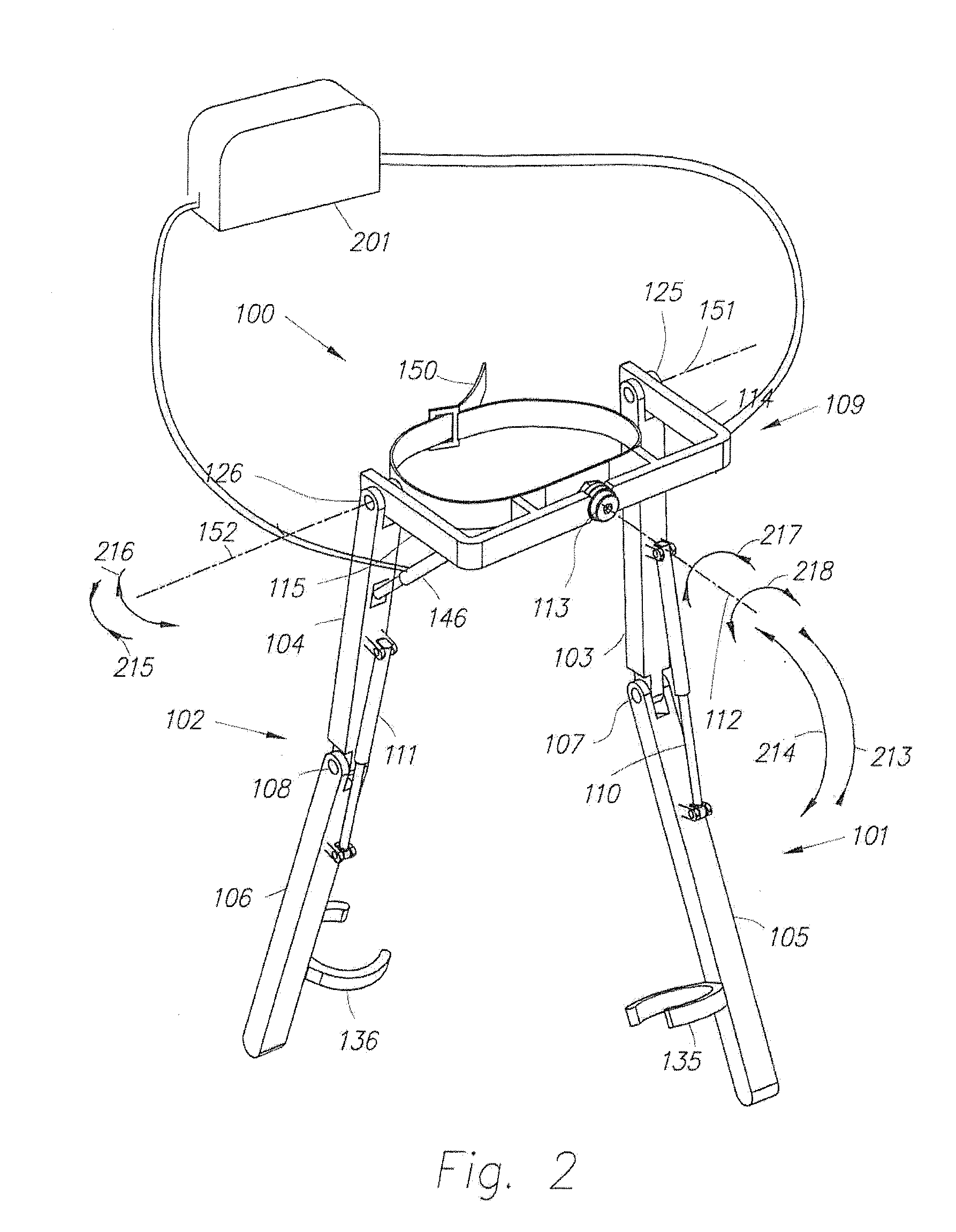Device and Method for Decreasing Energy Consumption of a Person by Use of a Lower Extremity Exoskeleton
a technology of lower extremity and exoskeleton, which is applied in the field of lower extremity exoskeleton, can solve the problems of increasing the oxygen consumption of the wearer, not being able to transfer power from the exoskeleton to the person, and people of ordinary ability often consume a great deal of energy
- Summary
- Abstract
- Description
- Claims
- Application Information
AI Technical Summary
Benefits of technology
Problems solved by technology
Method used
Image
Examples
case 1
[0087]As can be examined from equation (9) if hip actuator torque TE is such that:
TE>(MTRUNKL2+I){umlaut over (β)}1−(LMTRUNK+RML)g Sin(β1+α)+TF (10)
Then FE1L Cos(β2−β1)+FE2D>0. This means if the actuator torque is chosen such that it is larger than the summation of the inertial torque (MTRUNKL2+I){umlaut over (β)}1, gravitational torque −(LMTRUNK+RML)g Sin(β1+α), and the frictional torque TF, then the torque from person 187 onto lower extremity exoskeleton 100 about point F, FE1L Cos(β2−β1)+FE2D, is positive. This means that the torque from person 187 on lower extremity exoskeleton 100 is in the counterclockwise direction and the torque on person 187 is in the clockwise direction and along the person's forward velocity direction 162. When the torque on person 187 is along the person's forward velocity direction 162 (as shown in FIG. 5), power is transferred from lower extremity exoskeleton 100 to person 187. Since the time integral of this power over the entire stance time is posit...
case 2
[0089]As can be examined from equation (9) if the hip actuator torque, TE is such that:
TEMTRUNKL2+I){umlaut over (β)}1−(LMTRUNK+RML)g Sin(β1+α)+TF (11)
Then FE1L Cos(β2−β1)+FE2DTRUNKL2+I){umlaut over (β)}1, gravitational torque −(LMTRUNK+RML)g Sin(β1+α) and the frictional torque TF, then the torque from person 187 onto lower extremity exoskeleton 100 about point F, FE1L Cos(β2−β1)+FE2D, is negative. This means that the torque from person 187 on lower extremity exoskeleton 100 about point F is in the clockwise direction and the torque on person 187 is opposite to the person's forward velocity direction 162 (counterclockwise direction). When the torque on person 187 is opposite to the person's forward velocity direction 162 (as shown in FIG. 5), power is transferred from person 187 to lower extremity exoskeleton 100. If the time integral of this power over the entire stance time is negative, mechanical energy is transferred to lower extremity exoskeleton 100 from person 187.
case 3
[0090]As can be examined from equation (9), if the hip actuator torque TE is such that:
TE=(MTRUNKL2+I){umlaut over (β)}1−(LMTRUNK+RML)g Sin(β1+α)+TF (12)
Then FE1L Cos(β2−β1)+FE2D=0. This means the torque from person 187 onto lower extremity exoskeleton 100 about point F is zero. If the time integral of this power over the entire stance time is zero, no mechanical energy is transferred between lower extremity exoskeleton 100 and person 187. In this case, the wearer's energy expenditure neither increases nor decreases.
Remark 1
[0091]Since exoskeleton trunk 109 rotates very little (i.e., β2 is relatively constant in comparison to angle λ) and the summation of torques on exoskeleton trunk 109 is zero, equation (13) states that the torque on exoskeleton trunk 109 from person's upper body cancels the algebraic summation of the reaction torques from hip actuators 145 and 146.
TP=TE−TS−TG (13)
where:[0092]TP: Torque on exoskeleton trunk 109 from person's upper body 149[0093]TE: Torque on exo...
PUM
 Login to View More
Login to View More Abstract
Description
Claims
Application Information
 Login to View More
Login to View More - R&D
- Intellectual Property
- Life Sciences
- Materials
- Tech Scout
- Unparalleled Data Quality
- Higher Quality Content
- 60% Fewer Hallucinations
Browse by: Latest US Patents, China's latest patents, Technical Efficacy Thesaurus, Application Domain, Technology Topic, Popular Technical Reports.
© 2025 PatSnap. All rights reserved.Legal|Privacy policy|Modern Slavery Act Transparency Statement|Sitemap|About US| Contact US: help@patsnap.com



